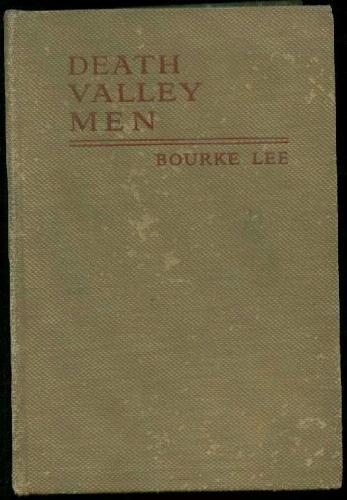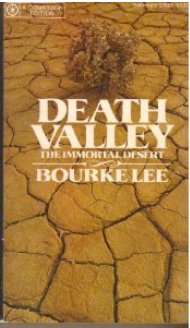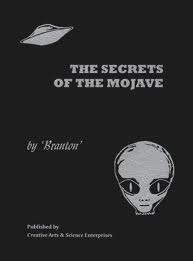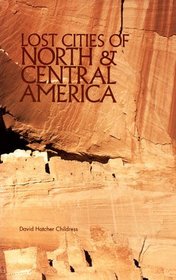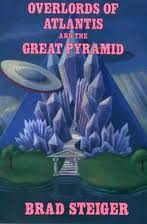|
|
||||
|
..
Get close enough to the ten beehive-shaped
structures that serve as the starting point for the Wildrose Peak Trail
in Death Valley National Park and you might smell smoke—but don't panic,
it's just a lingering smell from old kilns, which were built in 1876. The
kilns were used to process silver and lead ore and are no longer in operation
today.
Source: National Geographic Death Valley is an unusual place. There are areas below sea level and it is on of the hottest places on Earth, yet beneath the desert are huge aquifers that stretch hundreds of miles and may even connect to the Ocean. The image above, while not related to the tale of the Lost City, is non the less an intersting photo to start us off. Death Valley is also home to "The Sliding Rocks of Racetrack Playa" which we will cover later Death Valley’s Lost City By David Johanek Is there a lost city concealed in the cavernous depths of the Panamint Mountains of California’s Death Valley? Or is it merely a tale told by lonely miners dreaming of striking the mother lode? Or perhaps only a con man’s plan to fill his pockets with investor’s funds? A few, claiming to have found the city, became as lost as the ancient place they sought. Bourke Lee, Death Valley historian and author of the book Death Valley Men, first described the city in 1932. One night Fred White, his wife, and their partner Thomason stumbled into the cabin of miners Jack and Bill. The visitors complained of car trouble. Thomason ventured to Los Angeles for parts leaving White and his wife with the miners. Jack and Bill noted that Thomason returned with a rather large roll of cash. After some debate, the three decided to tell the miners exactly what they were doing in Death Valley. Some years earlier, White, while prospecting in an abandoned shaft near Wingate Pass, fell through the shaft’s floor. He found himself in a long natural cavern. “It leads all through a great underground city; through the treasure vaults, the royal palace, and the council chambers; and it connects to a series of beautiful galleries with stone arches in the east slope of the Panamint mountains. Those arches are like big windows in the side of the mountain and they look down on Death Valley.” Jack and Bill looked into White’s eyes. White stared back with a look of madness. White’s look wasn’t the incoherent glare of a lunatic. He believed in what he claimed to have found. White’s madness was the glee of someone striking it rich.
Source: National Geographic “Why don’t you start at the beginning?” Jack asked. Fred White rose in the cavern, dusted himself off and peered into the inky blackness. Looking around his small circle of light, he saw climbing out was impossible. Having only one choice, White crept into the unknown. Inch by inch he made his way down a natural cavern. At certain places he felt the unmistakable impressions of tool marks. Had he stumbled into another mine? After hours of clambering, White’s hand slipped off the cavern wall. He fell forward. The wall came to an end but luckily the floor remained. This was no longer a cavern floor, it was smooth, almost polished. Reaching into his pack, White pulled out a candle. Having only a few he hadn’t dared light one, but now a combination of curiosity and necessity forced him to strike a match. White’s jaw dropped when the candle-light illuminated a table. Inlaid jewels glittered in the dim light. He brushed away the dust of unknown years revealing a table of polished stone, smooth as glass and reflective as a mirror. Running his fingers along the line of encrusted jewels on the table’s edge, White bumped into something blocking his path. Looking up, White saw he was not alone. White screamed, dropping the lit candle. Rolling down the table, the candle illuminated a grim gathering. Around the table they sat, dried flesh stretched tight over ancient bones. White staggered backwards and lost control. His arms searched the darkness to find the cavern from which he came. His fingers found arms, legs, faces. He composed himself, realizing these bodies were dead. They couldn’t hurt him. Stumbling over a strange lever in the floor, White lit another candle. Turning the lever, a sudden burst of flame singed his eyebrows. Other bursts surrounded the circumference of the room. The illumination of gas-lights for the first time revealed the full extent of his discovery. White counted at least one hundred mummified corpses. some sat at the long table. Others stood like guards around the chamber, propped up by golden spears and shields. Most laid in heaps upon the floor. They wore leather clothing. Some wore jewel adorned leather aprons and gold armbands. Something even more astounding drew his attention. Above him towered the image of a man, or perhaps a god, eighty-nine feet tall and made of solid gold. Fred White would make two more trips to the lost city, joined by his partner, Thomason, and once with his wife. They found stone doors “balanced so you can move them with your little finger, if you find the right place.” They ascended passages reaching high into the mountains, leading to large “windows” overlooking Death Valley. The party developed an astounding theory. “They’re high above the valley now, but we believe that those entrances in the mountain side were used by the ancient people that built the city. They used to land their boats there.” The explorers hoped to attract scientific interest to their find. White claimed the Smithsonian Institute offered him a million and a half dollars for their discovery. Another “government man” expressed interest but wanted proof. What proof White had was lost when a “friend” with whom they left several artifacts, as well as gold and jewels, disavowed any knowledge of these artifacts. Swindled out of their proof, the treasure hunters retrieved more relics, this time burying them near the cavern entrance. Returning to Death Valley on what was to be their fourth trip to the lost city, the explorers found a drastically changed area. A storm destroyed several landmarks used to locate the cavern. White’s party decided their only hope to locate the city was to climb to the “windows” overlooking Death Valley. The treasure hunters were last seen patching a tire near their destination. Jack, Bill, and other miners searched. No trace of White, his wife, Thomason, or their car was ever found.
The lost city was forgotten until one day in 1946, when Dr. F. Bruce Russell approached Howard E. Hill with a story and a deal too good to be true. Telling a tale eerily or suspiciously similar to White’s account, Russell, like White, fell through the bottom of a mine shaft into a cavern. After following the tunnel, Russell’s story begins to differ from White’s. Russell told of carvings similar to ancient Egyptian motifs, and a ritual hall with symbols commonly seen in Masonic lodges. The bones of extinct animals, including mastodons, saber-toothed tigers, and dinosaurs were stacked along the walls. Gas-lights were missing from Russell’s story, replaced by torches dipped in a tar-like substance. He also found mummies, eight feet tall, laid out side by side. Amazed by Russell’s story, Howard Hill eagerly answered the retired physician’s call for investors. He and several other potential investors met in a Beverly Hills hotel. There, in an expensive suite, Russell told them his story and unveiled a set of artifacts from the caverns. With the claim of thirty-two caves found in a 180 square mile area stretching from Death Valley into southwestern Nevada, the investors were only too happy to donate funds. At this meeting Russell proposed the founding of “Amazing Explorations.” Anyone investing in his corporation would be partners and share the wealth. A week later Russell took the investors on an exclusive tour of the caverns. Hill and others claimed to have seen the animal bones as well as the “Masonic” temple. After viewing the site the group decided it was time to tell the world about their amazing discovery. Joined by Dr. Daniel S. Bovee, Hill called for a press conference on August 4, 1947. It was believed Bovee would lend credibility to the group’s claims because of his work in opening New Mexico’s cliff dwellings. Dr. Bovee estimated the date of relics he examined to be 80,000 years old. Hill claimed several mummies had been removed for scientific examination and went on to describe them. “These giants are clothed in garments consisting of a medium length jacket and trouser extending slightly below the knees. The texture of the material is said to resemble gray dried sheepskin, but obviously it was taken from an animal unknown today.” The press conference went mostly ignored by the media. Only a handful of newspapers carried the story, most notably the San Diego Union. Not to be deterred by the lack of publicity, Russell made one more trip to the caverns. He said farewell to his investors and promised to open an account at a Barstow bank. Weeks later, Russell’s car was found in Death Valley with a burst radiator. Inside was his suitcase, but no artifacts and no money. No Barstow bank had opened an account. Russell and the funds were never seen again. The other members of “Amazing Explorations” tried in vain to find the tunnels. Nobody remembered landmarks, and the ever-changing desert landscape didn’t help either. Tom Wilson, Death Valley guide and miner as well as full-blooded Paiute, searched for the tunnels in the 1920’s. Finding a shaft “where no shaft had a right to be,” Wilson explored to the bottom but found nothing. He did have a good reason for looking though. Many years earlier his grandfather found the tunnel. His grandfather's story is one of the strangest of all. One day while exploring, Tom’s grandfather stumbled across a strange cavern in the Panamints. The elder Wilson became lost in a series of caves. Reaching the end of a long tunnel he met a strange people. They wore clothing made of leather, spoke an unknown language, and ate strange foods the Indian had never tasted. The people had a wealth of gold and rode horses. Despite their differences they welcomed the Indian, inviting him to stay. After three years he left his new friends and made his way home through the tunnels. The Wilson’s would have known the legends from their Paiute lore. The Paiute’s believed the gateway to their afterlife could be reached through an underground passage leading to Na-gun-to-wip, the home of the spirits, ruled by the God Shin-au-av and his beautiful virgin daughters. According to legend, only one man dared venture to Na-gun-to-wip in his earthly body. Mourning the loss of his beloved wife, a great chief descended into the passage. Inching his way through the seemingly endless tunnel the brave warrior was beset by the trials of the underworld. Fighting through hordes of demons, evil spirits, and savage beasts, the chief approached his final challenge. A narrow bridge of rock stretched over a bottomless chasm. Across the abyss the beautiful maidens of Shin-au-av beckoned and encouraged him to cross. At his back snarled the underworld creatures. Bravely, the chieftain crossed, entering the fabulous land of Na-gun-tu-wip. The most beautiful of Shin-au-av’s daughters approached, offering to spend eternity with the chieftain. The chief’s love for his wife was unwavering and he demanded to be taken to her. Impressed by the chief's bravery and touched by by his devotion, the maiden took his hand and led him deeper into the spirit world.
Visitors to Death Valley's Badwater
Basin travel 282 feet (86 meters) below sea level to reach the lowest point
in North America. The vast, cracked salt flats that cover the nearly 200
square miles (520 square kilometers) of the basin are made up of sodium
chloride, better known as table salt.
Source: National Geographic Around a huge fire the spirits of thousands danced to happy music. Bottomless vessels of cactus wine and baskets of fine food were enjoyed by all. The chief searched the endless faces for his love. “There are far too many, how will I ever find my wife.” “You must wait here until you see her, when you do, you must take her at once. If you return her successfully to your world she will be returned to the flesh, if you fail she shall remain. Be warned, great chief, see that she does not falter from your grasp. If she looks back, even one passing glance, she will stay.” With that grim warning the maiden rejoined the dancers. After three days the chief saw his wife in the crowd. Rushing to her side, he grabbed her and fled. Reaching the narrow bridge, they hesitated. The snarling creatures across the chasm frightened his wife who looked back towards the peaceful afterlife. Realizing the fateful mistake too late, the chief reached for his wife. At his touch she vanished. The sorrowful chief returned to the upperworld alone. The tale told by Navaho chief Oga-make is by far the weirdest of all. He spoke of a people known as the Hav-musuvs, who settled in Death Valley long ago when it was still a sea. A sea-faring people, the Hav-musuvs came in “huge rowing ships.” Discovering a huge cavern deep under the Panamints, they built a great underground city. In time, the desert sands replaced the sea. When ships were no longer usable the Hav-musuvs took to the air in “flying canoes” described as “silvery ships with wings.” When not using aircraft the Hav-musuvs rode strange “snowy white animals” unknown to the Indians. The Hav-musuvs were a “beautiful people” with “golden tinted skin” and “long dark hair.” They wore toga-like garments and sandals. Hav-musuvs had advanced weapons. A small non-lethal tube “which stuns one with a prickly feeling like a rain of cactus needles.” The other, a long silver tube, “when this is pointed at you, death follows immediately.” A Paiute chieftain lived with the Hav-musuvs. He described the underground city as “an ancient city of marble beauty.” The city was lit by “white lights which burn night and day and never go out or need any fuel.” Since 1947 when Dr. Russell and his “Amazing explorations” made their claims of a lost city under Death Valley, nobody else has claimed to have made any discoveries. No artifacts brought out by White or Russell have ever surfaced. What happened to the mummies Hill claimed were removed? Whatever happened to Dr. Bovee who claimed to inspect and date the mummies and relics? Perhaps someday some of the lost artifacts will surface, until then the claims of giant mummified human remains seem to be the most verifiable of the discoveries. In 1889, Ed Earl Repp, working with brothers H. Flagler Cowden and Charles C. Cowden, recovered the fossilized remains of a seven and one-half foot tall woman in Death Valley. In July, 1895, near Bridlevale Falls, California, miners led by G.F. Martindale found the remains of a woman almost seven feet tall still holding a mummified child. The most documented and verifiable account of giant remains comes from Lovelock Cave in Nevada. In 1911, James H. Hart and David Pugh discovered the remains of several red-haired giants as well as numerous cultural artifacts. In 1912 professional excavations under the direction of Llewellen L. Loud began. In all, almost sixty bodies were recovered. Two skulls recovered from Lovelock Cave can still be seen in museums in Lovelock and Winnemucca, Nevada. While not proving the existence of a lost city, other accounts of giant human remains found in the American Southwest lends credence to Russell’s claims of Death Valley giants. Could Fred White have heard the old Indian legends and made up his story just to impress miners Jack and Bill? He didn’t solicit for funds, in fact just the opposite happened. White offered them a share of the treasure as thanks for their hospitality. Bourke Lee seemed to take the position that no lost city existed but yet he admitted having looked for it, as did Jack, Bill, and Tom Wilson based, on his grandfather’s account. Could Dr. Russell have read Bourke Lee’s book and based his story on that? Why would a retired physician living in Beverly Hills have risked his life in one of the harshest environments on Earth? He would have to have made or purchased artifacts and planted them in a remote Death Valley cavern, not to mention carving symbols and hieroglyphs into the walls. If all he wanted to do was con investor’s couldn’t he have found an easier and less risky way. Howard Hill, Dr. Bovee and other investors inspected the artifacts, mummies, and location. Bovee, a professional archaeologist, wouldn’t have been fooled by stage props or home-made artifacts. Hill and Bovee would have to have been in on the con, but they never tried to skip town and Hill lost money in the deal. If they did make it up, they may have paid for it with their lives. White's party and Dr. Russell were never seen or heard from again. Perhaps, someday hikers will stumble across their remains and the mystery will be solved. Or perhaps, like Tom Wilson’s grandfather, they too found a strange people living beyond a long tunnel in the Panamint Mountains. Only they decided to stay in the lost city of the Hav-musuvs. Copyright 2005, David Johanek, all rights reserved. Sources Arcana Paranormal, Occult, and Conspiracy Research: Lost Civilizations
Burlington UFO and Paranormal Research and Education, Alien Races. Names And Descriptions, (Ancient Humanoid Sub-Race) Hav-Musuvs (Suvian) - [HTML][Archived]
O’Neal, Leo H.,”The Legend Of The Death Valley Mummies.” Far Out, vol.1, no.2, winter 1992, pp45-47. Quayle, Steve, Mysterious 1947 News Report Of Giant Desert Mummies Surfaces,
|
||||
|
..
Source: National Geographic By Badger Bart In 1946 a man calling himself Dr. F. Bruce Russell, and claiming to be a retired physician, told a similar story about finding strange underground rooms in the Death Valley area in 1931. He told of a large room with several tunnels leading off in different directions. One of these tunnels led to another large room that contained three mummies. Artifacts found in the room appeared to be a combination of Egyptian and American Indian design. The most amazing thing about the mummies though was the fact that they were more than eight feet tall. Dr. Russell and a group of investors formed "Amazing Explorations, Inc" to handle the release, and profit, from this remarkable find. But, as stories of this type usually go, Russell disappeared, and the investigators were never able to find the caverns and tunnels again, even though Russell had personally taken them there. The desert can be very deceiving to anyone not used to traveling it. Month's later, Russell's car was found abandoned, with a burst radiator, in a remote area of Death Valley. His suitcase was still in the car. The old TV series Death Valley Days once ran a short story about western pioneers also finding mummies in the desert. Since one of the script writers stated that "there had never been a script without a solid basis in fact", it would be interesting to find out what their source had been. |
||||
|
..
Not for the faint of heart, Death
Valley National Park, in California and Nevada, is hot and dry. Temperatures
in the park once hit 134°F (57°C) in July 1913. Zabriskie Point,
seen here, offers a spectacular view of the badlands.
Source: National Geographic Another old mystery of ancient civilizations is unsolved in Death Valley, which may conceal an underground city that was described in Paihute Indian legend. The city apparently was first described 68 years ago, in Bourke Lee's book, "Death Valley Men." The book recounts that tale of two Death Valley men (identified as Bill and Jack) who said they'd discovered the remains of an ancient civilization after falling through the bottom of an old mine shaft near Wingate Pass. They described an underground cavern that they followed for 20 miles into the bowels of the Panamint Mountains. They claimed to have discovered preserved mummies in what appeared to be an underground city. The mummies wore armbands, and were holding golden spears. Included in other artifacts they described were giant statues; a large roundtable; gold bars and gemstones; perfectly balanced stone wheelbarrows; and huge, counterweighted stone doors. The source of light for the underground city, they discovered, was an ingenious system fueled by subterranean gases. As they followed the tunnels and caverns upward toward the eastern slope of the mountains, they speculated that the ancient city (like Death Valley) likely was underwater centuries ago, which might explain the arched structures that appeared to be quays that they thought were docks for vessels. Lee reports in his book that the two explorers retrieved some of the treasures from the site, and attempted to market them to scientists they thought were associated with the Smithsonian Institution. But the artifacts were stolen and the men were never able to find the caverns again. Lee never heard from Bill and Jack again. In 1946, more than a decade after Lee wrote of the Death Valley tale, Dr. F Bruce Russell claimed to have found a similar underground civilization beneath Death Valley in 1931, the year before Lee's book was published. He also reported finding eight-foot-tall mummies beneath the mountains, and described artifacts of Egyptian and American Indian design. Dr. Russell and a group of investors reportedly formed an enterprise they called "Amazing Explorations, Inc." to profit from artifacts they found in the caverns. Russell and his colleagues also couldn't find the entranced to the caverns again, and soon thereafter, his car was found broken down and abandoned in Death Valley. Russell's suitcase was in the car, but he was never found. Are there remains of an ancient civilization, or an Atlantis, under Death Valley? Until modern explorers or prospectors stumble onto the caverns again, we may never know. By Sally Suddock Does Death Valley hide an underground civilization? - Expedition Magazine |
||||
|
Giant Desert Mummies Surfaces ..
The internet site of radio talk show host Jeff Rense (http://www.rense.coin/general15/hiss.htm) has unearthed a mysterious, unexplained, but very provocative clipping from the August 5, 1947 edition of the San Diego Union. According to the clipping, explorers had unearthed, near the Arizona-Nevada-California line, the mummified remains of strangely costumed giants which the discoverers dated to around 80,000 years ago. The Union reported that a Howard E. Hill of Los Angeles was recounting the work of Dr. F. Bruce Russell, a retired Cincinnati physician who had originally located the first of several tunnels near Death Valley in 1931, but had not been able to return to the area until 1947. With the help of Dr. Daniel S. Bovee, who with Hill's father had once helped open up New Mexico's cliff dwellings, Russell had recovered the remains of several men of 8 to 9 feet in height. "These giants," said Hill, "are clothed in garments consisting of a medium length jacket and trouser extending slightly below the knees. The texture of the material is said to resemble gray dyed sheepskin, but obviously it was taken from an animal unknown today." Hill also said, according to the Union, that in another cavern was found the ritual hall of the ancient people, together with devices and markings similar to those now used by the Masonic order. In a long tunnel were well-preserved remains of animals, including elephants and tigers. So far, Hill added, no women have been found. He said the explorers believe that what they found was the burial place of the tribe's hierarchy. Hieroglyphics, he added, bear a resemblance to what is known of those from the lost continent of Atlantis. They are chiseled, he added, on carefully polished granite. TRACE OF GIANTS FOUND IN DESERT LOS ANGELES, Aug 4. (AP)-- A retired Ohio doctor has discovered relics of an ancient civilization, whose men were 8 or 9 feet tall in the Colorado desert near the Arizona-Nevada-California line, an associate said today. Howard E. Hill. of Los Angeles speaking before the Transportation Club, disclosed that several well-preserved mummies were taken yesterday from caverns in an area roughly 180 miles square, extending through much of southern Nevada from Death Valley, Calif. across the Colorado River into Arizona. Hill said the discoverer is Dr. F. Bruce Russell, retired Cincinnati physician, who stumbled on the first of several tunnels in 1931, soon after coming West and deciding to try mining for his health. MUMMIES FOUND Not until this year, however, did Dr. Russell go into the situation thoroughly, Hill told the luncheon. With Dr. Daniel S. Bovee, of Los Angeles -- who with his father helped open up New Mexico's cliff dwellings -- Dr. Russell has found mummified remains together with implements of the civilization, which Dr. Bovee had tentatively placed at about 80,000 years old. "These giants are clothed in garments consisting of a medium length jacket and trouser extending slightly below the knees." said Hill. "The texture of the material is said to resemble gray dyed sheepskin, but obviously it was taken from an animal unknown today." MARKINGS DISCOVERED Hill said that in another cavern was found the ritual hall of the ancient people, together with devices and markings similar to those now used by the Masonic order. In a long tunnel were well-preserved remains of animals including elephants and tigers. So far, Hill added, no women have been found. He said the explorers believe that what they found was the burial place of the tribe's hierarchy. Hieroglyphics, he added, bear a resemblance to what is known of those from the lost continent of Atlantis. They are chiseled, he added, on carefully-polished granite. He said Dr. Viola V. Pettit, of London, who made excavations around Petra, on the Arabian desert, soon will begin an inspection of the remains. Atlantis Rising
Quayle, Steve, Mysterious 1947 News Report Of Giant Desert Mummies Surfaces |
||||
| FAIR USE NOTICE: This page contains copyrighted material the use of which has not been specifically authorized by the copyright owner. Pegasus Research Consortium distributes this material without profit to those who have expressed a prior interest in receiving the included information for research and educational purposes. We believe this constitutes a fair use of any such copyrighted material as provided for in 17 U.S.C § 107. If you wish to use copyrighted material from this site for purposes of your own that go beyond fair use, you must obtain permission from the copyright owner. | ||||
|
|




